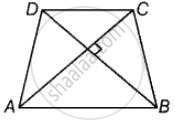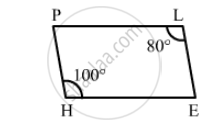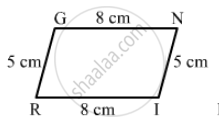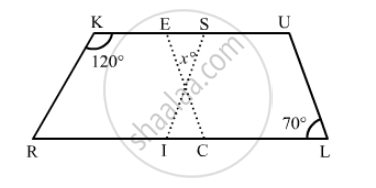Advertisements
Advertisements
प्रश्न
Diagonals of a quadrilateral are perpendicular to each other. Is such a quadrilateral always a rhombus? Give a figure to justify your answer.
उत्तर
It is not necessary that a quadrilateral having perpendicular diagonals is a rhombus.
E.g. Consider a trapezium ABCD in which AB || CD.

APPEARS IN
संबंधित प्रश्न
Can the following figure be parallelogram. Justify your answer.

Can the following figure be parallelogram. Justify your answer.

In the following figure RISK and CLUE are parallelograms. Find the measure of x.

In a parallelogram ABCD, AB = 10 cm, AD = 6 cm. The bisector of ∠A meets DC in E, AEand BC produced meet at F. Find te length CF.
Which of the following statement is true for a rhombus?
It has all its sides of equal lengths.
Which of the following statement is true for a rhombus?
It can be a square.
The diagonals of a quadrilateral are of lengths 6 cm and 8 cm. If the diagonals bisect each other at right angles, what is the length of each side of the quadrilateral?
State with reason whether the following statement is ‘true’ or ‘false’.
Every parallelogram is a rhombus.
ABCD is a rhombus. If ∠BCA = 35°. find ∠ADC.
Construct a rhombus CLUE in which CL = 7.5 cm and LE = 6 cm.
